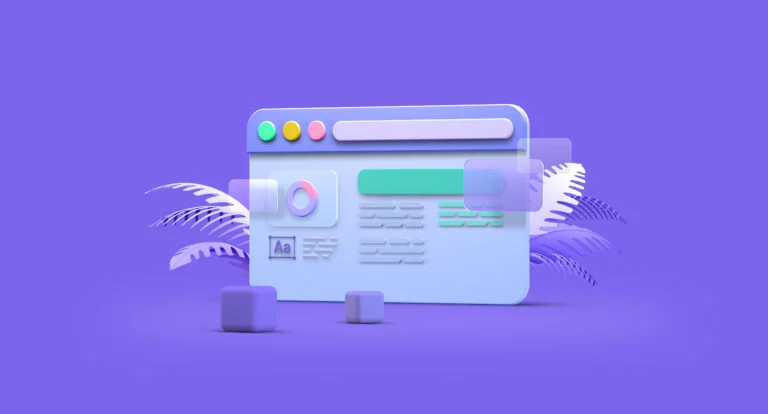Your website does so much for your business.
It solidifies your presence online, acts as your online headquarters, and has a direct effect on revenue, exposure, credibility, and relations. That’s why websites are widely viewed as a requirement for businesses today.
As rewarding as owning a website can be, not all websites are created equal and some of them fail to leave the lasting impression we all hope for. With the way web design is constantly changing, evolving, and improving, the only true way to find sustained success with a website is by following the trends we see on a yearly basis.
Of course, you’ll need to find a way to make it your own, but the latest web design trends give you a firm idea of what users are looking for in a website at that point in time. Satisfying these trends helps build trust with the user and offers a level of comfort other websites fail to provide.
As you can imagine, trust and comfort are extremely important to users on the internet today. The COVID-19 pandemic has forced a majority of business to be handled online and customers are using the internet for everything — even more than before.
With the world revolving around the internet, it’s important now more than ever to provide users with a quality website that satisfies what the customer needs. To ensure your website utilizes some of the hottest web design trends of 2020, we’re going to detail 3 of the most popular trends for you below.
Let’s get started!
UI/UX DESIGN
UI/UX design has completely taken over web design for the past several years, but 2020 has brought a new level of need for this type of design. To break it down for you, the ‘UI’ stands for ‘user interface’ and the ‘UX’ stands for ‘user experience.’ A healthy balance of both are required for a successful website.
The theory here is to deliver a quality user interface that maximizes appeal and minimizes confusion. Once you give users something to interact with, you need to ensure they’re having a positive experience with it. Without that experience, the interface means nothing — and vice versa.
A good example of this is Google. They know their customers are after one thing — information — and they know they want it fast. They built a user interface that’s easy, straight to the point, and minimizes distractions. Then, they deliver the user experience by bringing you that information in milliseconds.
Can you imagine if Google was built like FaceBook with hundreds of tabs, buttons, pages, photos, videos, etc.? How about if Google searches took 5 minutes to load? Or if it was only able to search through websites starting with the letters A-F?
To avoid this, you need to understand what your users are looking for when they visit your website, make it easy to navigate through, and make it fast. A healthy balance between user interface and user experience is never too far away!
RESPONSIVE DESIGN
When websites were largely accessed via desktop computers and laptops, developing a website was much easier. In 2020, websites are accessed on everything from a computer to a laptop, smartphone, tablet, television, video game consoles, and even eBook readers.
To make matters worse, these devices come in every screen size imaginable. If you want to satisfy what we discussed with UI/UX design, then you’ll need to satisfy responsive design, as well.
When your website is responsive, it acts like a shapeshifter when users access your site on different devices and screen sizes. What you’re left with is a website that looks clean, uniform, and professionally-made no matter where or how you’re accessing the website.
A good example of a responsive website is Slack. If you view the website on several different devices, you’ll notice the content stays the same, but it might move a little to accommodate the smaller or larger screen.
It looks appealing either way and even makes the website look more like an app when on a smaller screen, such as a smartphone.
PARALLAX SCROLLING
Parallax scrolling is a fun and exciting design element when giving your website some character and personality. While it’s not a new design element, it’s certainly a hot trend in 2020. In fact, it’s one of the most popular elements utilized today and is used in a variety of situations.
When you add parallax scrolling to your website, it adds a level of depth perception to a two-dimensional website. As a user scrolls down the website, the background moves at a slower pace than the foreground, giving the user a 3D-effect.
A perfect example of parallax scrolling is one of our favorite fan websites for The Goonies. You’ll notice it doesn’t behave normally as you start to scroll and while it seems like there’s no way to ‘control it,’ it makes it easy for the user to find what they’re looking for.
In a way, it takes them on a journey — almost like you’re looking for a treasure. That’s not to say all websites need to offer treasure, but adding some parallax scrolling to certain areas won’t hurt.
LOOKING FOR QUALITY WEB DESIGN YOU CAN TRUST?
With quality web design, your users find an extreme amount of value in your website and continue to come back for more in the future. Eventually, you’ll have traffic coming in from all angles and your website will be more-than-prepared for all of it.
If you’re looking for the best ways to get your designs done, you’ll get a lot of use out of DesignRush. With all the best web design agencies under one roof, you can easily narrow down your list of potential web developers to find the one best suited for your project.
As always, you can contact us with any questions and one of our highly-trusted professionals will assist you immediately.


